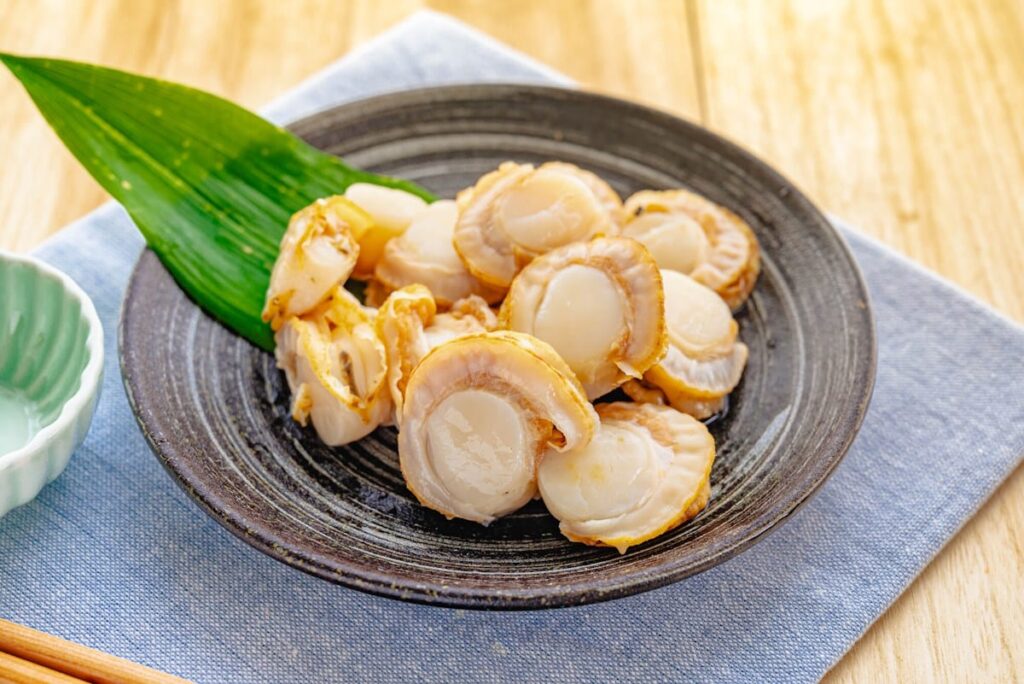[ad_1]
Japan relied on China to shuck its scallops for foreign exports. But China’s recent ban on Japanese seafood imports changed all that. Now, Japan’s government is looking to the country’s prison inmates to take over the task.
Officials consider dispatching inmates
The Ministry of Agriculture, Forestry and Fisheries of Japan (MAFF) is reportedly cooperating with the Ministry of Justice to task prison inmates with shucking scallops. It’s a job China had taken care of. That was until it banned all seafood imports from Japan following the Fukushima water release this summer.
Exiting a cabinet meeting last week, MAFF Minister Ichiro Miyashita (宮下一郎) confirmed the plan to reporters on October 20th. “(We are) cooperating with the Ministry of Justice to weigh the possibility of dispatching (inmates) outside the prison.”
Officials say that shucking scallops on prison grounds is not an ideal option. Such produce will not qualify for the Hazard Analysis and Critical Control Points (HACCP) Certification, an internationally recognized standard for food safety.
Inmates leaving prison grounds for manual labor is not unheard of for those on karihomen (仮放免) status, or provisional release.
Unwanted scallops
Before the Fukushima wastewater release began on August 24th, China was Japan’s biggest market for seafood. Half of that was for scallops.
Japan’s domestic production of scallops in 2022 amounted to 5.12 million tons of which 83% came from Hokkaido, Japan’s northernmost island. Approximately 28% worth ¥14.7 billion (over $98 million USD) went to China where up to 40 thousand scallops were shucked for U.S.-bound shipments.
Advertisements
Exports of Japanese seafood to China fell by 39% from the same month a year earlier to about ¥4.8 billion (over $32 million USD). With China’s ban cutting off a major export route, scallops are piling up in freezers in processing plants in Hokkaido.
Despite having large harvests of scallops, Japan’s labor shortage coupled with poor investments in processing equipment makes China an ideal business partner where the seafood processing industry runs more efficiently.
Saving the industry
The Kishida cabinet has responded to the strain of China’s ban on Japanese fishery businesses with plans to roll out a hefty relief package of ¥20.7 billion (over $1.3 million USD).
The ¥20.7 billion package comes in addition to the ¥80 billion (over $533 million USD) budget for relief efforts that already existed, according to Kishida’s statements on September 4th to reporters. Officials are drawing from the government’s emergency budget for 2022, totaling state support to the fishery industry to ¥100.7 billion ($672 million USD).
The larger budget aims to buy scallops back from fishermen and open new export routes. Kishida also encouraged the use of furusato-nozei (ふるさと納税), or hometown tax to support local fisheries.
The Kishida cabinet is not alone in its efforts to get Japan’s fishery industry back on its tracks.
The U.S. Embassy is providing information on processing facilities in Thailand and Vietnam to the industry, simultaneously sending a political message of U.S. defiance to China.
Manual labor in Japan

Prison labor employs approximately 36 thousand inmates across Japan’s seventy-five facilities, according to the Ministry of Justice’s 2021 report.
There are four categories of prison labor, including manufacturing, social contribution, vocational training, and self-employed work to which prisons assign each inmate to according to their skill set.
Mixed views
Online discussion exhibits skepticism and support for MAFF’s plans to employ inmates for shucking scallops.
Journalist Egawa Shoko (江川紹子), who investigated the cult of Aum Shinrikyo led and escaped assassination from the group, shared her thoughts on X (formerly known as Twitter).
“It (having inmates shuck scallops) could be good if it gives them a sense of contributing to society. But I don’t think it’s a skill useful for life after prison. I feel like this is just an idea to use inmates as a cheap and stable labor force.”
What to read next
Site Ranks Japan’s Naporitan One of “World’s Worst Foods”
Sources
[1] 農相、受刑者のホタテ殻むき検討 刑務所外への派遣、法務省と連携. Yahoo!ニュースJAPAN
[2] China drastically cuts seafood imports from Japan in wake of Fukushima water release. The Guardian
[3] 中国の輸入禁止が影響、日本産ホタテに何が?. 日本経済新聞
[4] 「ホタテ」加工会社は… 処理水放出から1週間 中国禁輸で輸出激減. Yahoo!ニュースJAPAN
[5] 受刑者のホタテ殻むき 農相「受け入れ業者や地域の理解が重要」. Yahoo!ニュースJAPAN
[6] 青森の「黒いダイヤ」はほとんどが中国むけ…輸出停止でホタテも「国内にあふれている」. 読売新聞
[7] 岸田首相、207億円の追加水産業支援を発表 中国の水産物輸入禁止受け. Yahoo!ニュースJAPAN
[8] 受刑者ホタテ殻むき刑務作業に賛否 堀江貴文氏「良い案」江川紹子氏「出所後に役立つ技能とは」. Yahoo!ニュースJAPAN
[9] 刑務作業のあらまし. 法務省
[ad_2]
Source link



